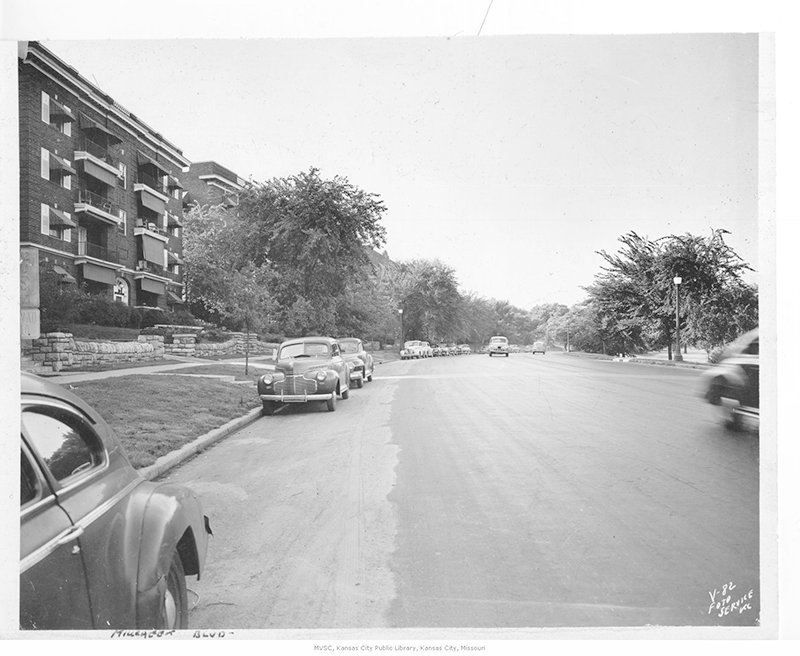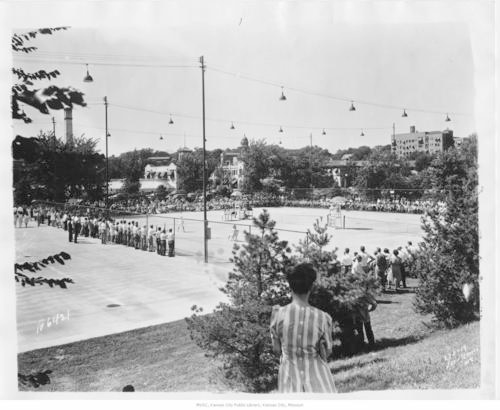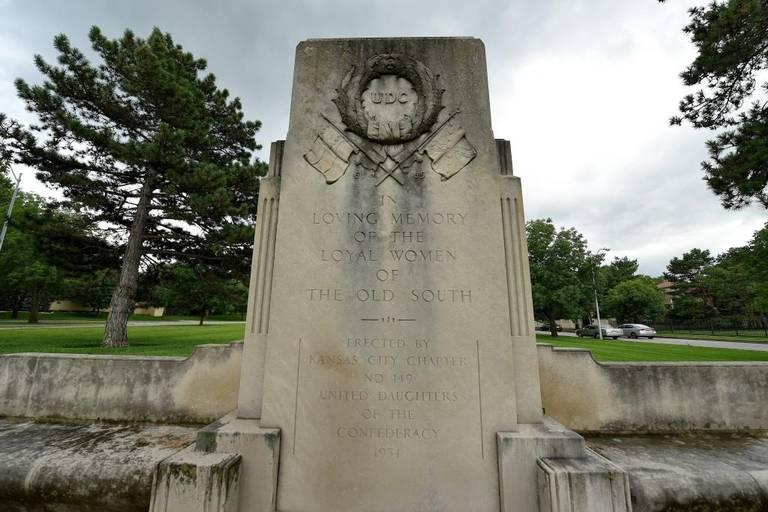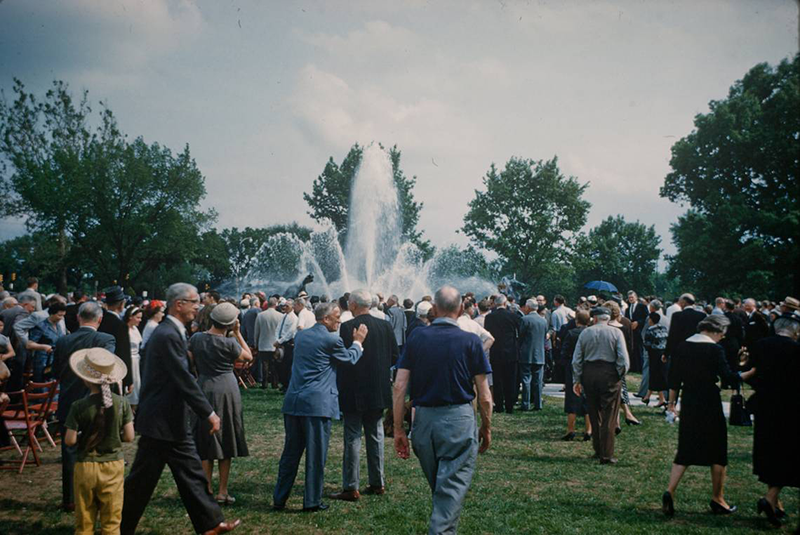Mill Creek Parkway is back on the map. So let’s rewind with KCQ on the historic roadway
“What’s your KC Q” is a joint project of the Kansas City Public Library and The Kansas City Star. Readers submit questions, the public votes on which questions to answer, and our team of librarians and reporters dig deep to uncover the answers.
Have a question you want to ask? Submit it now »
For drivers spinning around the Country Club Plaza, what was once old is new again.
Dating back almost a month ago, Kansas City’s J.C. Nichols Parkway reverted back to its original name from 1913, Mill Creek Parkway.
The Board of Parks and Recreation Commissioner’s June 30 decision to remove the J.C. Nichols name came to light during the George Floyd protests, reigniting calls to topple or remove monuments tied to the Confederacy and slavery or systemic racism. The public demanded Nichols’ legacy of using racist policies be stripped from the city’s vernacular.
So this week’s edition of “What’s Your KCQ?,” a community partnership between the Kansas City Public Library and The Star, explores the history of Mill Creek Parkway. The name change sparked one reader to ask, “What’s the history of the mill which resulted in the naming of Mill Street in Westport and Mill Creek Parkway on the Plaza?”
Back in the 1800s, a stream running through Westport powered a mill there, the Westport Mill, and then ran southwest emptying into Brush Creek — this area was known as Mill Creek Valley. The Kansas City Board of Park Commissioners later set out in 1908 to obtain the land for a public parkway.

Eventually, buildings on the land were condemned and the city was able to begin constructing a roadway. The road work was completed in 1913 and Mill Creek Parkway — running from Westport Avenue to 48th street — made its debut, officially opening to the public.

The roadway stayed under the name of Mill Creek until 1952 when it was dedicated to J.C. Nichols, the developer who built the Country Club Plaza and several of Kansas City’s well-known neighborhoods.
The parks board also obtained 11.43 acres of land as a right-of-way for the parkway in 1908, which is now known as Mill Creek Park. The. park runs along Mill Creek Parkway; 43rd Street runs across the north end of the park, and the Country Club Plaza sits at the south end. A tennis court was built near the north end of the park in 1914. Later, more tennis courts were added to the south end. Now, the park is home to the Plaza Tennis Center.

In 1934, a memorial to the Loyal Women of the Old South was placed in the northeast corner of the park but it was removed in 1958 to make room for the then-named J.C. Nichols Memorial Fountain. The Old South monument was then moved to 55th and Ward Parkway but has since been removed at the request of the Missouri chapter of the United Daughters of the Confederacy in 2017.

The fountain, previously known as the J.C. Nichols Memorial Fountain, was donated to the park by Nichols’ three children. The fountain has not been given a new name yet. The fountain was sculpted in 1910 by French artist Henri L. Greber. The sculptures were built for financer Clarence Mackay’s private mansion in Long Island, New York, but Mackay died and the fountain was vandalized.
In 1951, the Nichols children bought three of the sculptures. The fourth sculpture had already been purchased by a neighbor who soon moved to Florida. In 2014, the Nichols Charitable Trust funded fountain restorations. With that, the fourth sculpture was found and installed into the fountain after nearly 80 years of separation.

J.C. Nichols’ son Miller Nichols, along with cardiologist Ben McAllister, worked with KC Parks in 1980 to add walking and jogging trails, benches, lighting and landscaping to the park.
Hours before the board voted to remove the Nichols name, the Nichols family and the Nichols Charitable Trust came out and said they supported the name drop from the street and fountain. Since then, the University of Missouri-Kansas city has considered changing the name of its Miller Nichols Library. Miller Nichols donated $1.5 to help build the library.
Submit a Question
Do you want to ask a question for a future voting round? Kansas City Star reporters and Kansas City Public Library researchers will investigate the question and explain how we got the answer. Enter it below to get started.


